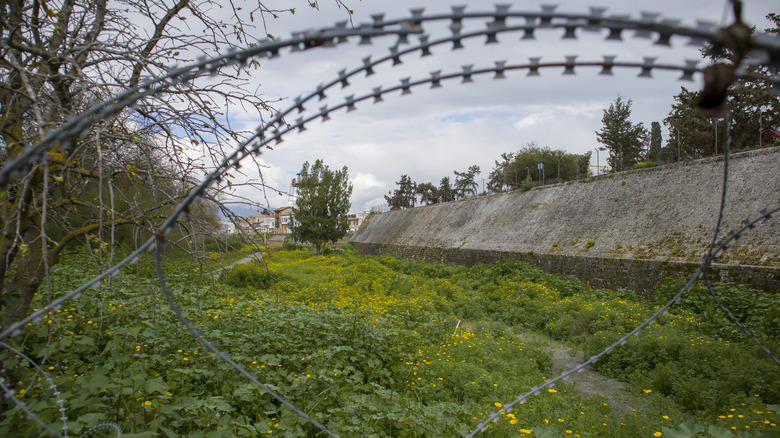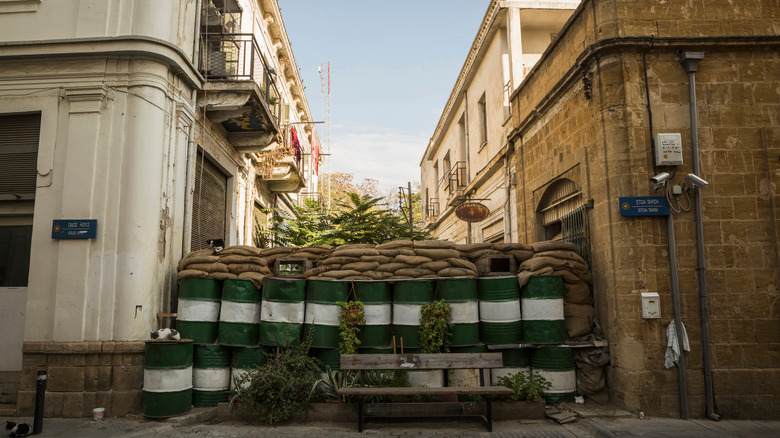The Real Reason You're Forbidden To Go To Parts Of The Cyprus Buffer Zone
After the ceasefire following the Turkish invasion of Cyprus in 1974, the island was split in two, with the south side administered by Greece and the north side administered by Turkey. Instead of a line border, a U.N.-controlled "buffer zone" exists between the two Cyprus territories, ranging from dozens of feet to a few miles wide (via UNFICYP). This demilitarized zone extends nearly 112 miles (180 kilometers) long, almost entirely across the island, interrupted only by military bases.
As the U.N. attempts to return the island to normal conditions, parts of the buffer zone, which is commonly called the "Green Line" or the "Attila Line," are now inhabited and can be visited by tourists and other civilians. More than 10,000 people live in the Green Line today, according to the U.N., including in Pyla, the only village in Cyprus where Greek and Turkish Cypriots live side-by-side (per Cyprus for Travellers). And since 2003, there are several crossing points across the Green Line, so that residents and visitors can more easily travel from one side of the island to the other (via Global Security).
What's inside the Green Zone
Inside the buffer zone, villages and towns lay dormant and abandoned. Even parts of existing cities have decayed over the last 50 years. Nicosia, the last divided capital in Europe, has the Green Line running through its historic city center. Buildings and monuments within the demilitarized zone have not been preserved and maintained, threatening the character of the city as a whole (via Peta Pixel).
Other parts of the Green Line are so remote that it's been a boon for plants and animals that thrive without human interference. A study of this natural "wildlife refuge" found that the zone is an important stopover for migratory birds like buzzards, ospreys, and harriers, according to Daily Sabah, and that it's been an important home for the rare Cyprus spiny mouse.
The Green Line is patrolled by the U.N.'s peacekeeping force, which responds to about 1,000 annual incidents a year in the zone, according to UNFICYP. These incidents include name-calling, the use of firearms, and especially unauthorized construction.

